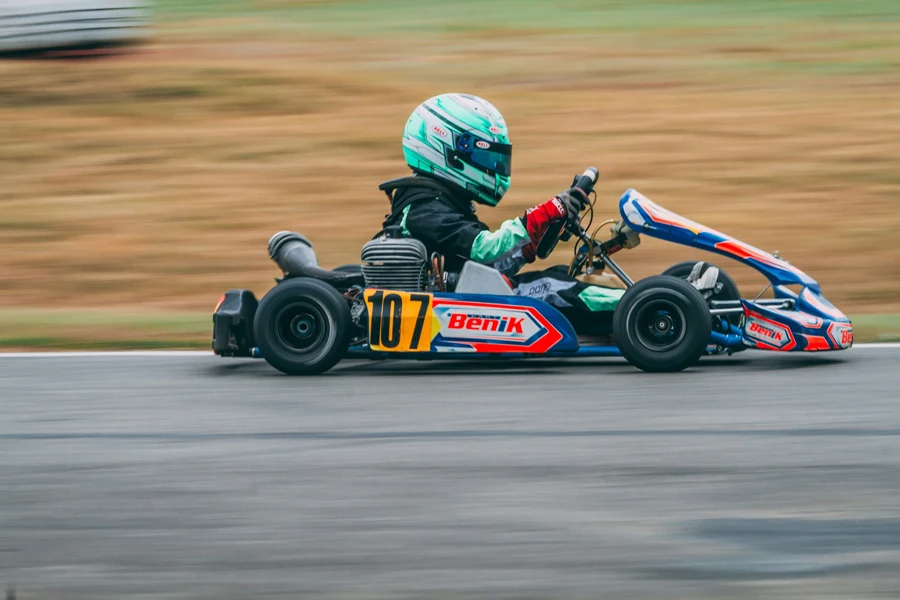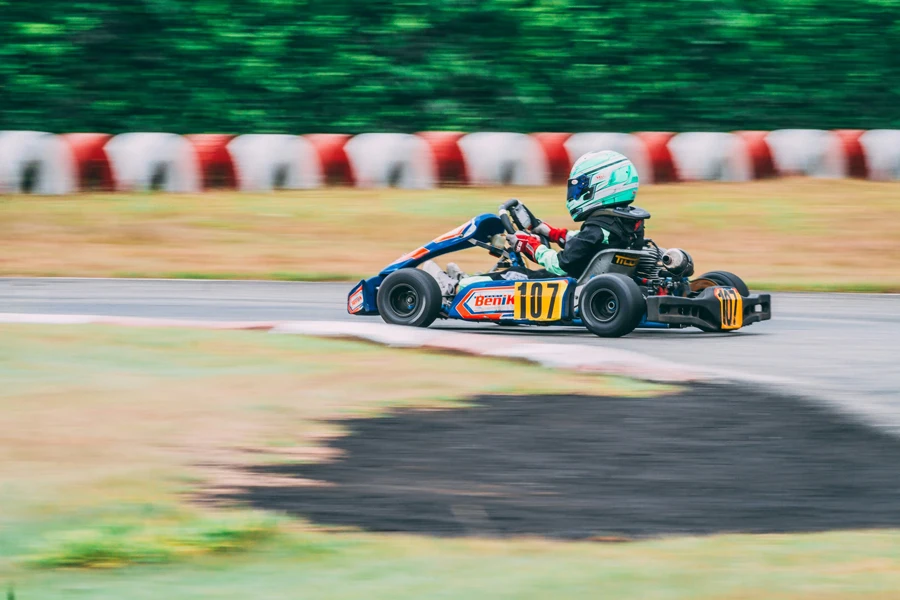Table of Contents
● Introduction
● Market overview
● Different types and their features
● Things to consider when selecting products
● Conclusion
Introduction
Go-karting has rapidly transformed into a global competitive sport, driving significant demand for high-quality parts and accessories. Whether for casual use or professional racing, choosing the right components is essential for optimizing performance and ensuring safety. The market continues to expand with advancements in electric engines, enhanced braking systems, and precision steering parts. This guide explores the latest market trends, key product features, and crucial tips for selecting the best go-kart accessories. By making informed decisions, buyers can enhance their karting experience and achieve lasting success.

Market overview
The go-kart industry is expected to see expansion, reaching $143.62 billion by 2028 with an annual growth rate of 4.9%, as reported by The Business Research Company. This growth can be attributed to the increasing interest in leisure activities, the inclusion of go-karts in theme parks, and the rising popularity of motorsports. Progressions in electric go-karts are also significantly influencing the market. The growing focus on environmental issues and the enthusiasm of the demographic have contributed to the popularity of electric go-karts in both recreational and competitive kart racing scenes.
When categorizing the go-karts by power source in the years until 2028, electric ones will dominate the market share, reaching around 35%, showcasing a shift away from traditional gasoline-powered versions. The usage of these go-karts is divided into two categories; rental purposes constitute 60%, while competitive racing makes up the remaining 40%. The Asia Pacific region is anticipated to experience a growth rate of 6.2%, establishing itself as a key market due to the increasing popularity of motorsports in nations such as China and India. In 2023, North America was the leading market with over 35%, as stated by The Business Research Company. This is due to the presence of go-kart manufacturers and rich motorsports heritage. With urbanization on the rise in Asia Pacific, the interest in go-kart racing is expected to increase for both leisure and professional purposes.

Different types and their features
Engines are key components in go-karts, with both electric and gasoline varieties having their advantages. Electric motors like those crafted by Razor are quieter and eco-friendly as they emit no pollution, making them perfect for indoor tracks. On the other hand, gasoline engines such as those manufactured by IAME or Briggs & Stratton are recognized for their power output and are preferred for competitive outdoor racing events. SKE Kart Racing states that electric go-karts are gaining popularity thanks to advancements in battery technology, which provide better accelerationѕ. Meanwhile, gasoline engines continue to reign supreme in environments owing to their high torque and superior handling capabilities оn diverse terrains.
For go-karts to run smoothly and handle well at high speeds across various track types, it’s vital that the transmission systems and axles are properly maintained and in good working condition. As highlighted by SKE Karting, sprockets play a role in the transmission by controlling speed and torque. Racers aiming for top performance levels especially need a tuned transmission setup to navigate technical tracks successfully.
The performance of a kart is greatly influenced by its tires and wheels. The choice of tires used for different surfaces like asphalt or dirt affects traction and handling abilities significantly. According to SKE Kartik’s insights, asphalt tires offer superior grip, while off-road ones are durable over bumpy terrains. Wheels enhance stability, especially during tight corners, and ensure longevity in intense racing conditions.

In go-kart racing, safety is paramount. The braking systems ensure that safety is maintained effectively, especially when using hydraulic brakes. Key components such as brake pads and master cylinders enable the kart to come to a dependable stop, which is vital during high-speed races. As noted by SKE Karting, transitioning to hydraulic braking systems can greatly enhance braking efficiency, enabling drivers to tackle corners confidently and quickly.
Components that help with steering, like the steering wheel and linkages, play a role in controlling go-karts. Carefully looking after steering systems enables precision handling, which is especially important in racing, where swift turns can give a real edge. SKE Kartingsuggest that aligning equipment properly guarantees the go-kart responds promptly to the driver’s commands for control during high-speed races.

Things to consider when selecting products
When choosing parts for go-karts, the purpose of use, whether for enjoyment or competitive racing, is a key factor to consider. Go-karts meant for recreational activities are typically crafted with comfort and user-friendliness. Conversely, those intended for racing require high-performance components, like powerful engines and cutting-edge braking mechanisms, to withstand the challenges of the race track. Based on Riiroo’s insight, high-end go-karts are designed to prioritize speed and safety while lasting longer compared to leisure karts, which cater more towards cost-effectiveness and leisurely drivers.
Safety should be a concern when selecting components mostly for racing purposes. Key elements to consider include brakes that work effectively, kill switches that can swiftly turn off the engine in emergencies, and roll bars which are crucial for protecting the driver in case of collisions or accidents during a race. Riiroo recommends using high-quality safety equipment such as FIA-approved helmets and fire-resistant suits often required in racing tracks. Ensuring that your go-kart is equipped with good brakes and sturdy bumpers can significantly lower the chances of accidents causing injury.

When taking care of go-kart components like engine rebuilds and tire replacements, for racing purposes, it’s essential to go for parts that are easy to maintain to save money in the long run. According to Riiroos insights, frequent maintenance is needed for high-performance go-karts, and investing in top-notch parts that last longer can help cut down costs over time in the demanding world of racing, where wear and tear are prevalent.
When buying parts, like engines and frames for racing vehicles, ensure they last and perform under pressure at a professional level. Brands like Tony Kart CRG and IAME are widely recognized for delivering top-quality components that stand the test of time. As advised by RiiRoo, it is wise for buyers to be mindful of selecting older or budget-friendly models, as the costs for upkeep could negate any initial savings attributable to outdated features or heavy wear.
The cost of go-kart racing equipment is a key factor to consider for both initial investment and maintenance expenses. The sports setup requires an initial investment ranging from £1,200 to £5,000 with ongoing expenses such as maintenance, purchasing new tires, and covering race participation fees could amount to approximately £15,000 per year. RiiRoo recommends opting for used go-karts or second-hand parts, which can lead to cost savings; however, conducting inspections is necessary to prevent hidden repair costs from arising.

Conclusion
Choosing the ideal go-kart components and add-ons is crucial to guarantee top-notch performance and safety for both rides and competitive races. With the industry evolving due to technology advancements and increased interest in karting activities, consumers need to opt for premium-grade parts that cater to their karting requirements while emphasizing longevity, safety attributes, and overall appropriateness. By being well-informed when making purchases, enthusiasts of kart racing can enhance their enjoyment on the track while striving for success.




